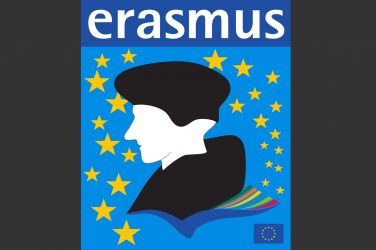We travel with the painter El Greco from Crete, through Italy to Spain, and finally end up in Glasgow. Who is the mysterious lady in a fur wrap?
In this column, we explore the wonders of Europe – artistic masterpieces and jewels of cultural heritage. These are the treasures which fill us with a sense of Europe’s complex past – how beliefs and identities have intertwined to create the continent and the nations whose borders are often so hard to define. This time, Ziemowit Jóźwik introduces a mysterious lady.

If you’re not an expert on art, you might be forgiven for mixing up your Titians with your Tintorettos or your Rembrandts with your Rubens. But among the ranks of European painters, El Greco – Doménikos Theotokópoulos the Cretan – is certainly one you’ll never confuse with any other. Whenever you see those martyred, unnaturally pale and slender saints with long fingers and shining tears in tormented eyes, you can be sure that it’s El Greco.
El Greco (1541-1614) remains one of the most important and influential painters in the history of Western art, even though he didn’t found a school and wasn’t to be spectacularly “discovered” years after his death. Alongside William Turner and Vincent van Gogh, he can even be seen as the key to understanding the European sense of aesthetics. The stranger from Greece became “the conveyor of Spanish soul par excellence,” the forefather of the Spanish national school, the Greek teacher of Byzantine art, an inspiration for Romanticists and Cubists, and Rainer Maria Rilke’s favourite painter. He’s known for his religious paintings – but there’s one mysterious work that does not present a sacred personage imperturbably gazing upon eternal life in heaven. It’s all about one lady.
A lady in a fur wrap
Her mocking eyes and subtle hand gesture immediately suggest that she is keeping a secret. She even conveys the impression that she knows exactly how interesting she will be for art historians. Who is she? When was she painted? Who was the owner of the portrait? Who commissioned it? And finally, is it really El Greco’s work?
Little is known: oil on canvas, 62.5 x 58.9 cm, currently exhibited in Glasgow. Even the date of its composition isn’t clear. It is generally attributed to the late 1570s, but some believe it was painted between 1577 and 1580. In the Galerie Espagnole in the Louvre in 1838, it was exhibited as a portrait of El Greco’s daughter, which is particularly fascinating as El Greco is said to have had only one child, a son. As often happens, it has also been suggested that there’s actually a man hidden under the exquisite cloak, or even that she is the Mother of God. According to the most popular theory, however, the name of the enigmatic lady in the fur wrap is Jerónima de las Cuevas, a young Castilian aristocrat who gave birth to the afore-mentioned son Jorge Manuel and died soon afterwards. Whoever she was exactly, let’s take a closer look.

The Greek, the Cretan
Looking at the picture, it’s difficult to escape the impression that there are traces of Greek and Byzantine influences in El Greco’s style. It doesn’t seem reasonable to suggest that the lady strongly recalls Petrus Christus’ “Young girl” or Sebastiano del Piombo’s “Young Roman woman“. Not only are the backgrounds of the paintings different, but the ladies themselves do not even seem to be similar. I’d say the Lady in a Fur Wrap rather resembles someone from many centuries earlier: the fresco said to be a portrait of Sappho, which was preserved in Pompeii after the eruption of Vesuvius. This was the first image that came to me when I saw El Greco’s painting. Was it the similar style of Mediterranean beauty, the painting technique, or the eyes?
El Greco was born on Crete, at the centre of several ongoing multicultural conflicts. One of the capitals of ancient Europe, Crete was already owned by the Venetian Republic, which caused constant friction between the Roman and the Greek-Orthodox Christian traditions. Two years after he was born, the Byzantine Empire collapsed and the Turks, who were thought of as foreigners but were actually rather close relatives, settled on the Anatolian peninsula, bringing the Muslim faith closer to Mediterranean Europe. It was in this atmosphere that the young Doménikos took his first steps as an icon painter. Doesn’t the Lady in a Fur Wrap emerge from the dark background like in a traditional icon, “painted by light”? The traditional method of icon painting consisted of covering the whole picture with black paint and then lightening certain spaces to make shapes emerge. That is why when we look at the lady ablaze with light we feel that she’s almost outside the painting.
The golden bridge
After leaving Crete, El Greco set out for Venice, where he hoped to gain some experience from the Italian renaissance masters. At that time, Venice was known as “a golden bridge,” a place where the East and West met and civilisations intersected. In El Greco’s time, it was home to the large Greek, German, Albanian, Armenian, Jewish diasporas and to dozens of artists, scientists, merchants or simple adventurers. Throughout the ages, The Lady in a Fur Wrap has been attributed to different artists, including the Venetian Tintoretto – and one reason for the disputed origins of the painting might be the multiple influences which shaped El Greco’s art.

It was in Venice that El Greco developed his style. It is said that he “owes Italy colours and perspective” -because traditional icon painting does not feature the geometrical perspective and naturalistic colours which characterised the Renaissance. He also exchanged the Byzantine tempera for oils. The main aim of his stay on the Apennine Peninsula was to study the style of Italian Renaissance masters, one of whom was Titian. El Greco even spent some time in his workshop where he developed his own style by investigating thoroughly the subtleties of the Venetian art. Who knows if the lady’s flushed cheeks aren’t actually an effect of those arduous studies.
A Cretan Glance at a Castilian beauty
It was in Spain rather than Italy that El Greco painted his mature works. This was the country which led the Counter-Reformation and championed the union of the Catholic states known as the Holy League, and it was a very hospitable and generous place for artists. However, El Greco’s experience of Spain was not necessarily typical of the time. The city of Toledo, where Doménikos was to live and get to know Jerónima, was well known as a place of intercultural dialogue rather than religious fundamentalism. The former Roman stronghold was a traditional capital of La Convivencia – the coexistence between Christian, Jewish and Muslim residents.

Similarly, El Greco himself, who was known for his devoutness, never officially converted from Orthodoxy even as a Catholic king’s royal painter. Neither did his ideas fit with the time. In the period of the Counter-Reformation, two views of art were in conflict. The Renaissance had brought a new concept of artistic freedom, in which the artist could develop his own allegories and symbols show his own impressions of the world without being tied to church dogma – this is one reason for the flourishing of secular painting in that time. Supporters of the Counter-Reformation were uncomfortable with the anthropocentric trend of Renaissance art, and instead emphasised the fact that rather than pursuing his own whims, the artist should stick to glorifying God by finding monumental ways to present that which was probable, using recognisable symbols, so that the ordinary Christian could understand it.
El Greco followed neither of these paths. Instead, as we can see from the Lady in a Fur Wrap, he was deeply convinced by the Neoplatonic idea that we can only achieve beauty by trying to draw nearer to ideas. For El Greco, painting wasn’t simply about applying colours and shaping forms in order to imitate reality; most of all, he aimed to capture things invisible to the eye. The essence of the lady’s beauty isn’t confined to optically perceived empirical phenomena. It seems we can really catch sight of something more. As David Davies wrote in El Greco’s Religious Art: The Illumination and Quickening of the Spirit, the Cretan’s paintings “convey the transcendental world of the figures represented.” The lady seems “to emerge” in the painting. Even though we think we know her, she still remains a mysterious lady in a fur wrap.
Many years later, in 1853, the Lady in a Fur Wrap emerged once again in London as a part of the “Spanish Gallery” of the French King Louis Philippe I. Once again she astonished the world – especially Sir William Stirling Maxwell, the famous Iberian culture enthusiast from Scotland. Defying the Scottish reputation for meanness, he bought the painting. In 1966, Sir William’s granddaughter Anne Maxwell Macdonald gave the painting to the city of Glasgow. And that’s where El Greco’s lady can still be visited.
Pure expression
The Lady in a Fur Wrap is perhaps not the most important painting created in the history of Europe. Probably not even the best painted by El Greco. Nevertheless, looking into the intimately smiling eyes of the Lady in a Fur Wrap, I can’t help wondering how many European stories might be hidden beneath a single oil-on-canvas, 62.5 x 58.9 cm portrait. Not to mention the pure expression of a painting showing the artists beloved partner, who was to pass away very soon afterwards.
Cover Photo: El Greco (PD)









